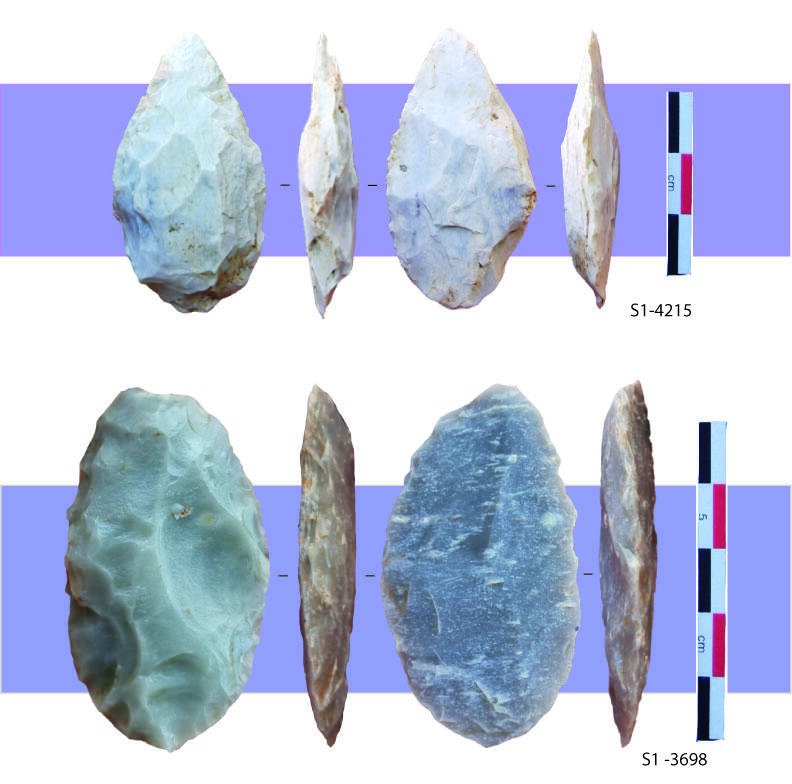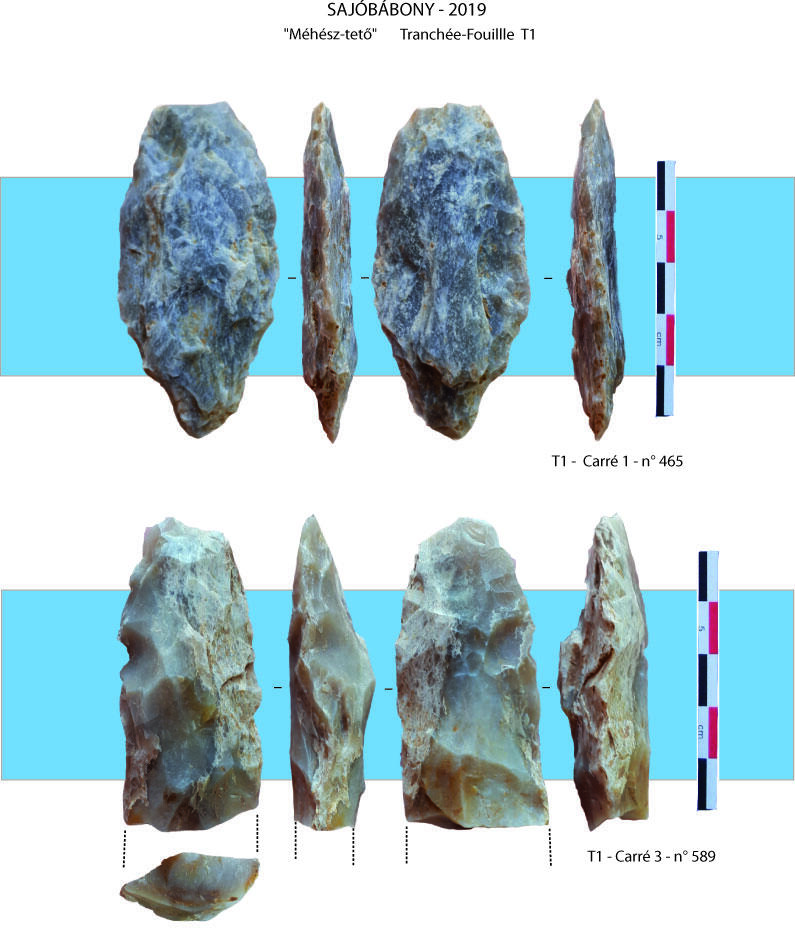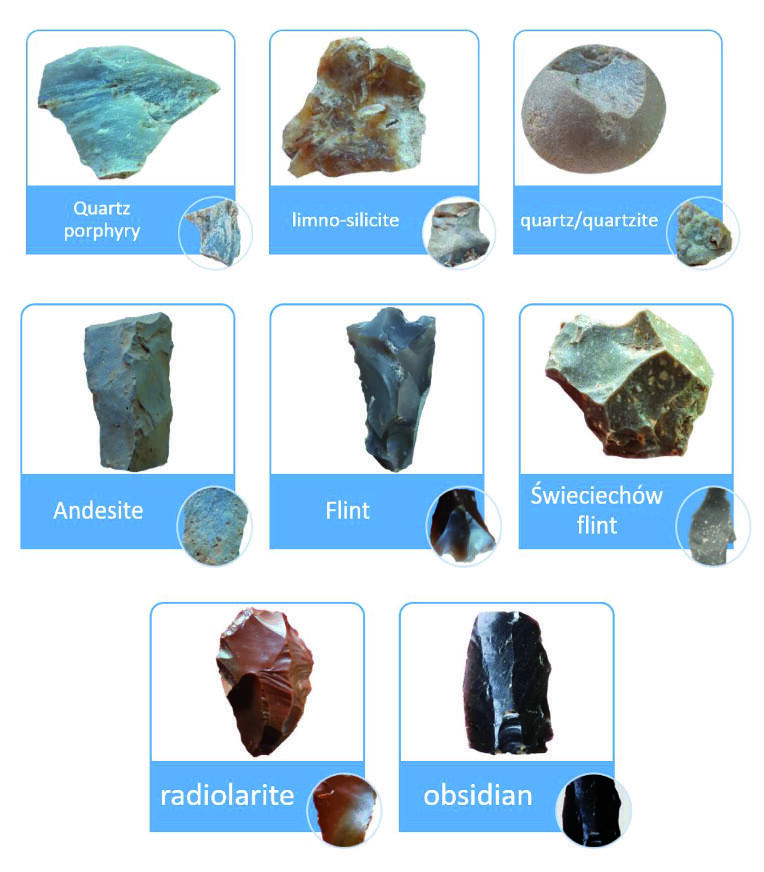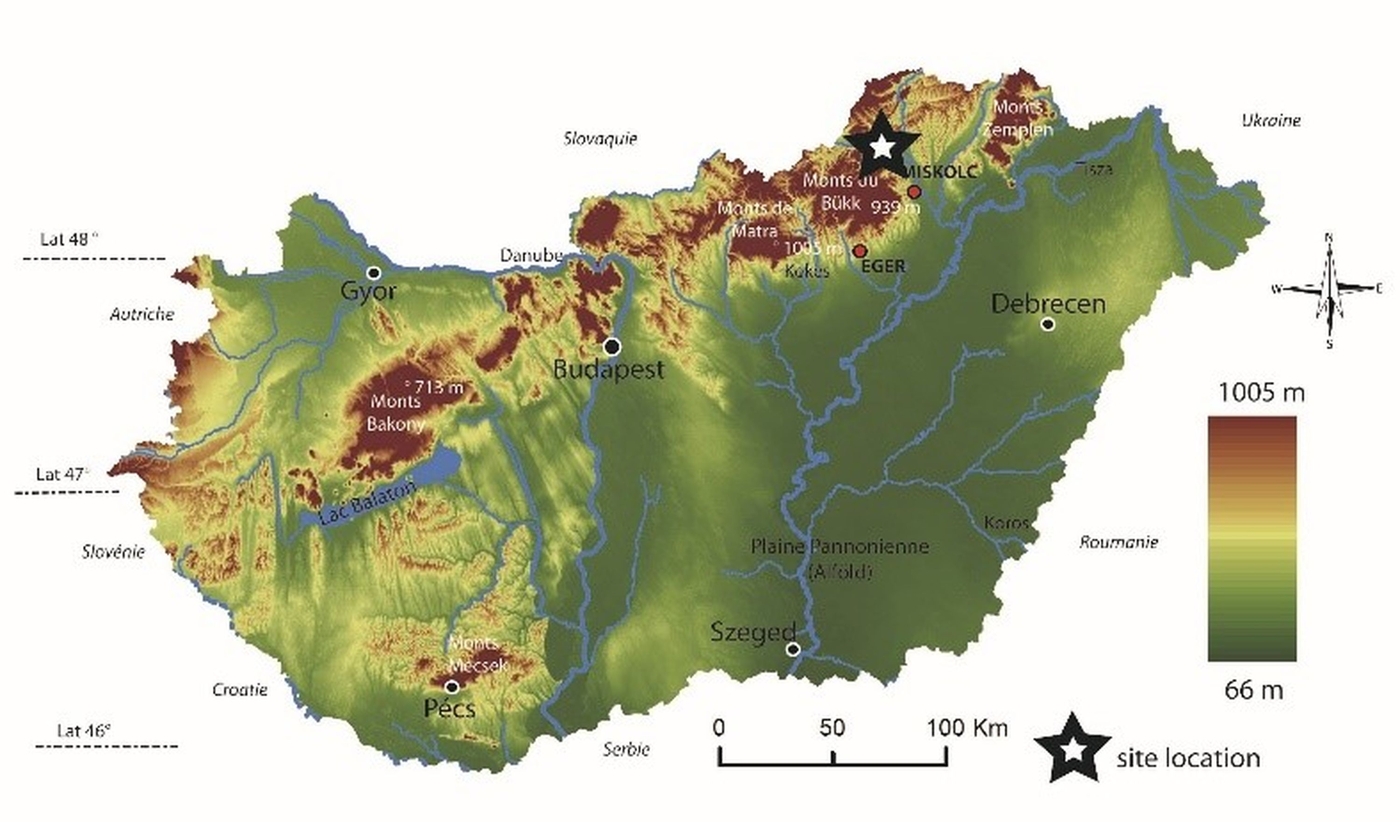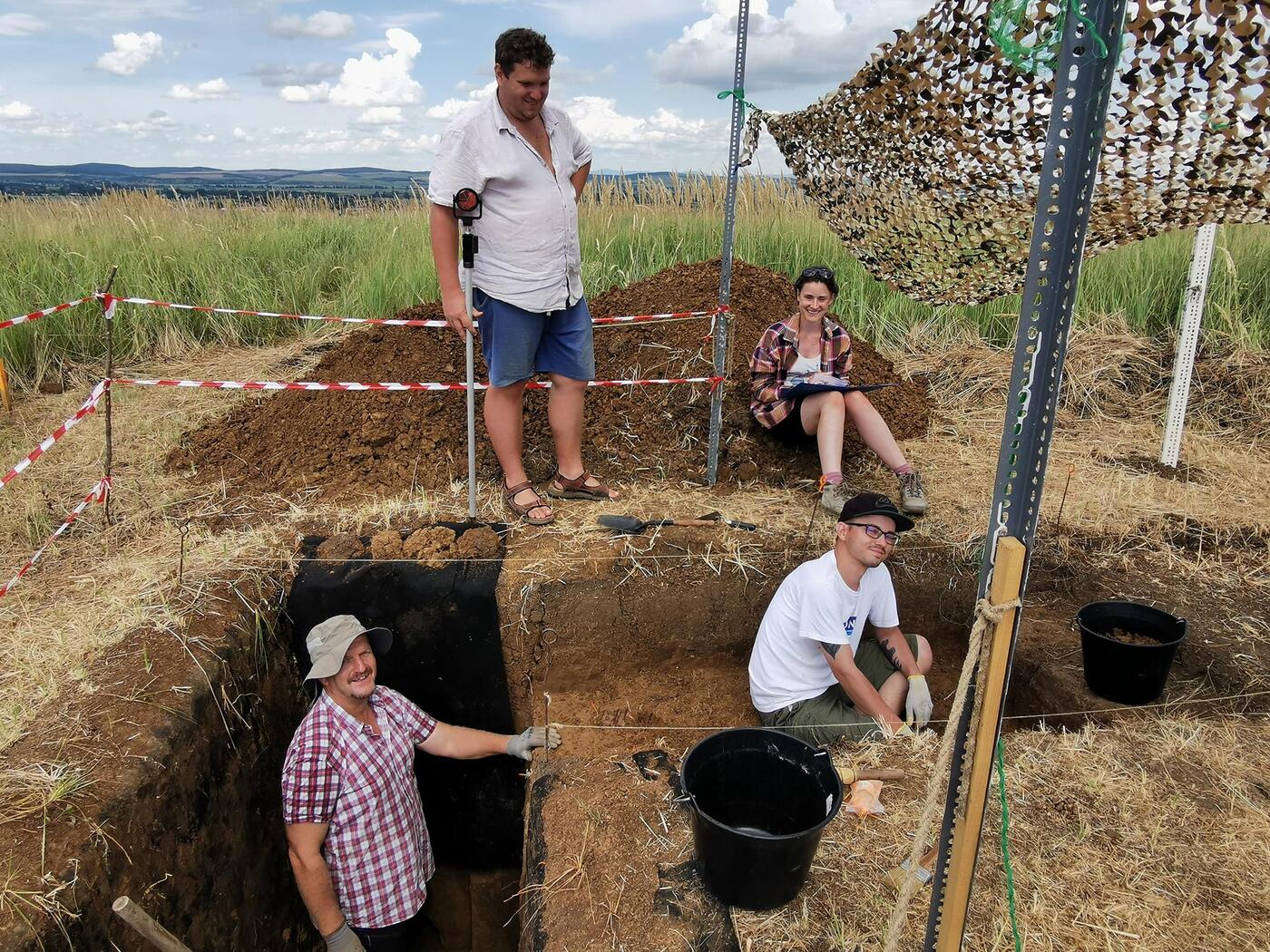Sajóbábony: the Palaeolithic in Hungary
The Middle Palaeolithic in Hungary is characterized by non-biface industries and other industries combining bifaces and leaf-shaped pieces. Hungary is also home to eponymous sites of the Middle Palaeolithic such as Taubachian, Jankovichian, Bábonyan. The latter, a cultural facies of Northern Hungary with leaf-shaped points dating to -50,000 years, is one of our focal points for the Late Middle Palaeolithic.

Sajóbábony is a 200 m² open-air site high on Mount Mehez-teto, at an altitude of 201 metres. More than 3,000 artifacts unearthed show that Neanderthals exclusively shaped bifacial foliate pieces. Pedestrian surveys added to our knowledge of their vast territory.
In the absence of bone and dental remains, the legendary tools discovered on the site are leaf-shaped points. Some of these carefully knapped tools are realized on locally sourced raw material (4 to 20 km) – as porphyry quartz and limno-silicates. Others use material coming from a larger area (andesite, radiolarite, quartz) or even further afield, such as flint from the Vistula area in Poland, 200 km away.
Our knowledge of raw materials enables us to trace the supply and circulation areas and the areas where these materials were transformed. By doing this, we can show which shapes they chose for their raw materials (quadrangular platelets, biconvex thick nodules, plano-convex slender nodules). Sometimes humans went beyond these initial morphologies, and sometimes they made a more systematic selection of the initial modules. As regards transitional levels, it remains to be seen if Neanderthals or anatomically modern humans were the ones who made these journeys, as the country is neighbouring seven other European countries.
The stratigraphy is complex, with eroded pedocomplexes affected by varied pedogenesis and frost cracks. Six OSL dates were performed in the soils contemporary with the major occupation, above and below it, in order to locate the passage or passages of the Neanderthals. The stratigraphic base at a depth of 2 m, with no archaeological remains, was dated at -248,000 years, while that contemporary with the occupation was dated at around -54,000 years (isotopic stage 3, pleniglacial).
The Hungarian team is composed of researchers from Eötvös Lorand University in Budapest, the Department of Physical Geography at the Science University of Budapest, the University of Miskolc and the Hungarian National Museum of Budapest. The French team is affiliated to the Université de Lille (UMR 8164 Halma, UMR 8187 (LOG), EA 4477 (TVES), EEP 8198 CNRS), the UMR 5600 (OMEAA, Lyon), and the UMR 7194 CNRS (HNHP, Paris). The mission also includes students from both universities of Lille and Budapest.
Useful links
Partnership
- Université de Budapest (Elte) (Hongrie)
- Université de Miskolc (Hongrie)
- Musée d’Histoire naturelle d’Herman Otto de Miskolc (Hongrie)
- Université de Gand (Belgique)
- Musée d’Histoire naturelle de Paris
- UMR 8187-LOG (Univ. Lille, CNRS)
- Université de Lyon 2 (plateforme OMEEA)


